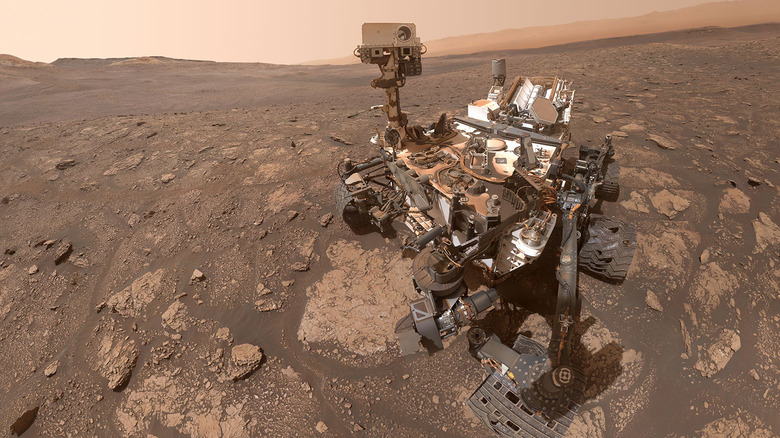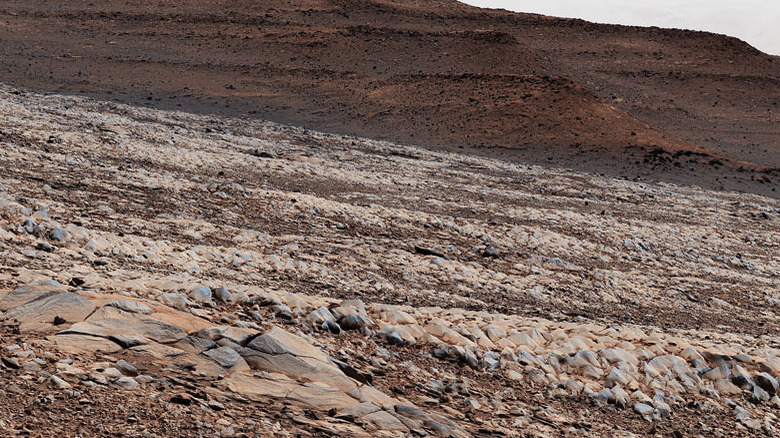This Might Be The Best Place To Find Evidence Of Life On Mars, According To NASA
One of the biggest questions in space science is if there is or ever was life elsewhere in the universe beyond Earth. Many missions focus on Mars, as scientists know the planet once had plentiful water on its surface and could have been similar to Earth (via NASA). Even though it's very unlikely that there's anything living on Mars now, there could have been microbial life there millions of years ago — and the NASA Perseverance rover was designed specifically to look for evidence of it. Now, though, new research suggests that if we want to find evidence of life on Mars, we should be focusing not on the planet's surface, but deeper down.
The problem is that Mars is bombarded by radiation from the sun. Earth is as well, but we have two advantages to help us: Earth's magnetosphere, which is the result of liquid metals inside the planet, and our relatively thick atmosphere. Both of these help to reduce the amount of radiation that hits the surface where we live. Mars, on the other hand, doesn't have a global magnetic field and only has a very thin atmosphere, so there are high levels of radiation on its surface.
This radiation not only makes the planet inhospitable, but it could also destroy the very signs of life we are looking for. Research conducted by NASA shows that future missions will need to dig as deep as 6.5 feet or more beneath the Martian surface to find indicators of life called amino acids. Although amino acids can be produced by non-biological processes — meaning that finding them wouldn't necessarily prove there was life present — they are considered building blocks of proteins. That means they are essential to life as we know it, so finding them on Mars would be a big deal.
How to hunt for amino acids
Recent research shows that the process of radiation breaking down amino acids happens faster than previously thought. Because of that, if there were amino acids in the Martian soil (called regolith) or in rocks on the planet's surface, they could be destroyed by radiation before we could see them. The process of destruction happens slowly — in the order of millions of years — but when we are looking for evidence of life from a very long time ago, that could be a problem.
Current rover missions like Perseverance and Curiosity look at features on the surface and also drill down deeper, but only by around 2 inches at most. According to Alexander Pavlov of NASA's Goddard Space Flight Center, the amino acids at these depths would only last for around 20 million years, and they could be destroyed even faster by water or chemicals called perchlorates that are common in the Martian soil.
To address this problem, there are two approaches that could be useful, according to NASA. The first is for future missions to be ready to drill much deeper, although this is technically challenging because there's a lot we don't know about the type of rocks and soil on Mars. That's what caused problems with the InSight lander trying to bury its heat probe. We'd need to learn more to design systems that could drill deeper.
But the other approach is something we could do now, which is to change the types of targets chosen by missions that can only drill to a shallow depth. The researchers suggest that these missions, like Perseverance, could look for recently exposed areas like relatively recent impact craters, where amino acids could have been sheltered from some of the damaging radiation in their time further beneath the surface.

